You may have read my last article on the sea trial aboard an Excess 14 sailing catamaran which was special in many ways. This time, at last, I´d had the pleasure of experiencing the cat in really nice sailing conditions after the first time there was no wind. During sailing I noticed something “off” on the catamaran. Can you spot it on the picture below?
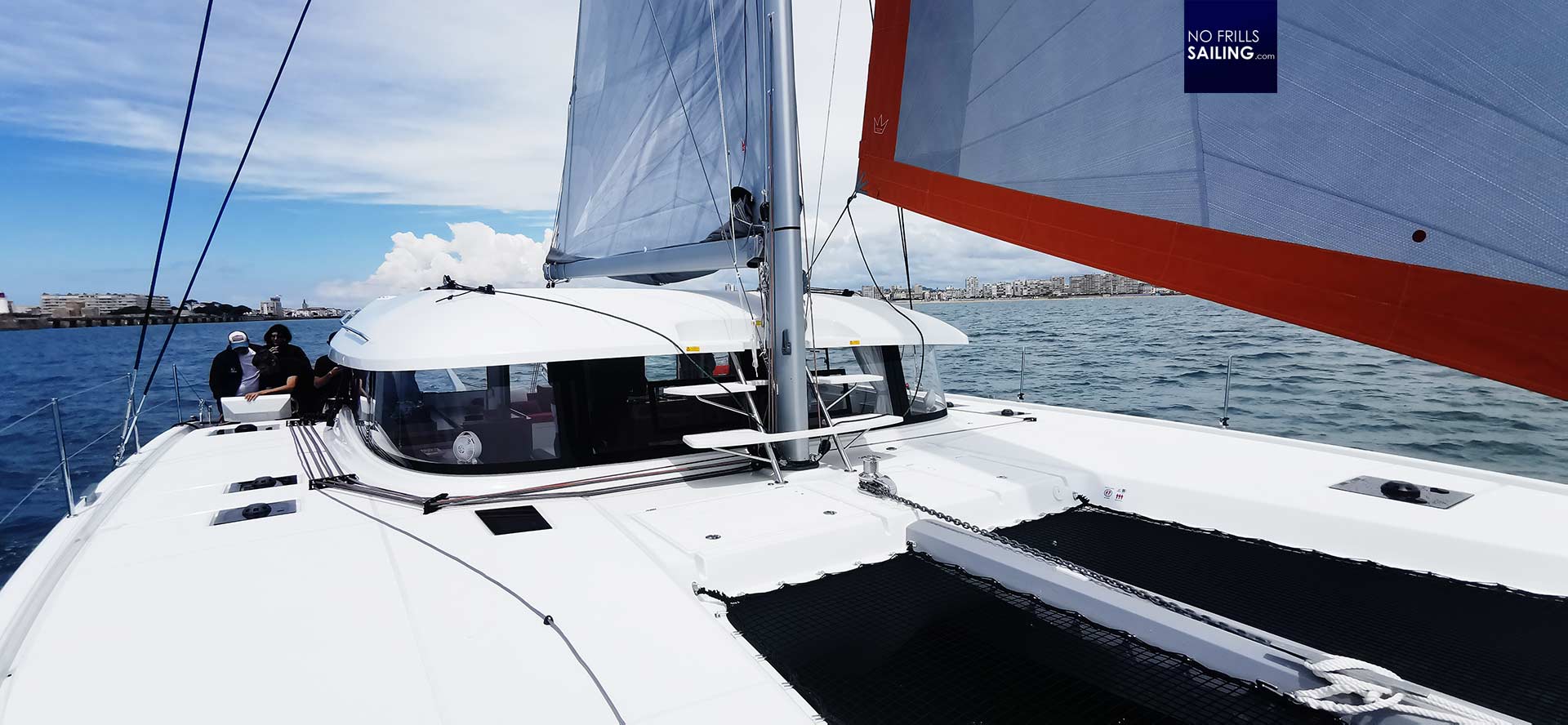
It´s on the mast. Mainsail. Check out the boom. Do you see it? No? Yes? Of course: There is no lazy bag! I was puzzled and a bit baffled to see that apparently something has happened. Where is the lazy bag? Where are the lazy jacks? Well, as it turned out, either the sails supplier Elvström or the maker of the lazy bag came up with a pretty smart idea to have those things put away when sailing. This article is about this ingenious lazy bag reefing system.
Why reefing a Lazy Bag anyway?
So, first: Why would you want to put away your lazy bag in the first place? I mean, it is indeed a very crucial part of your rigging that makes it absolutely a no brainer to fast, easy and conveniently take down your mainsail. “Lazy” in this matter means “fire and forget” – I always appreciate those racing boats with a clear, clean boom – but I pity them back in harbor packing their main sails to be tied to the boom in meticulous works.
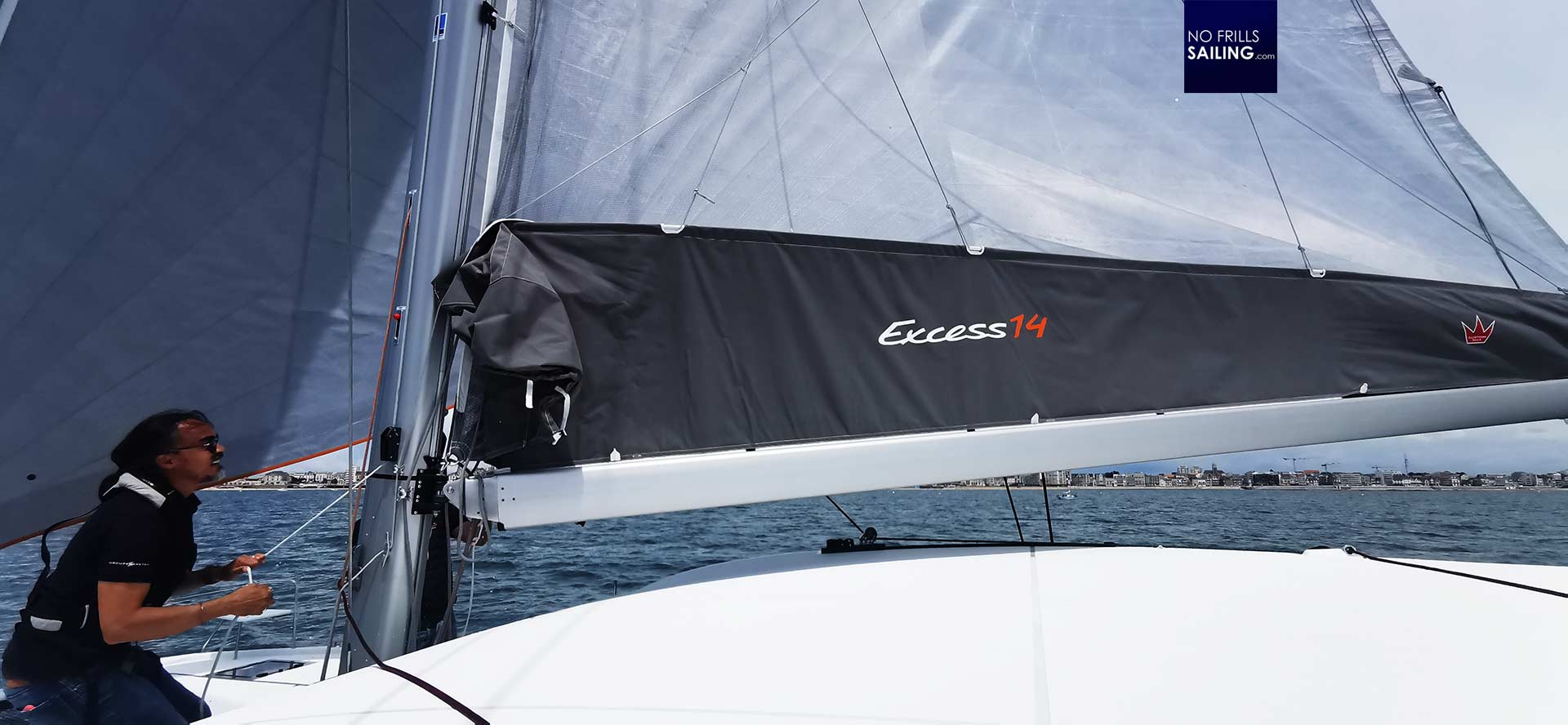
Well, as it turned out, you can have the best of both worlds. The mainsail of the Excess 14 is huge, like on any boat, it´s a pretty impressive stack of canvas. Likewise, the lazy bag needed to house this huge area of cruising laminate is a large thing. Imagining not having this black sack, it will surely optimize airflow on the lower side of the sail – even if only for a fraction. It also looks much cleaner. So, what do we need to install such a reefing system?
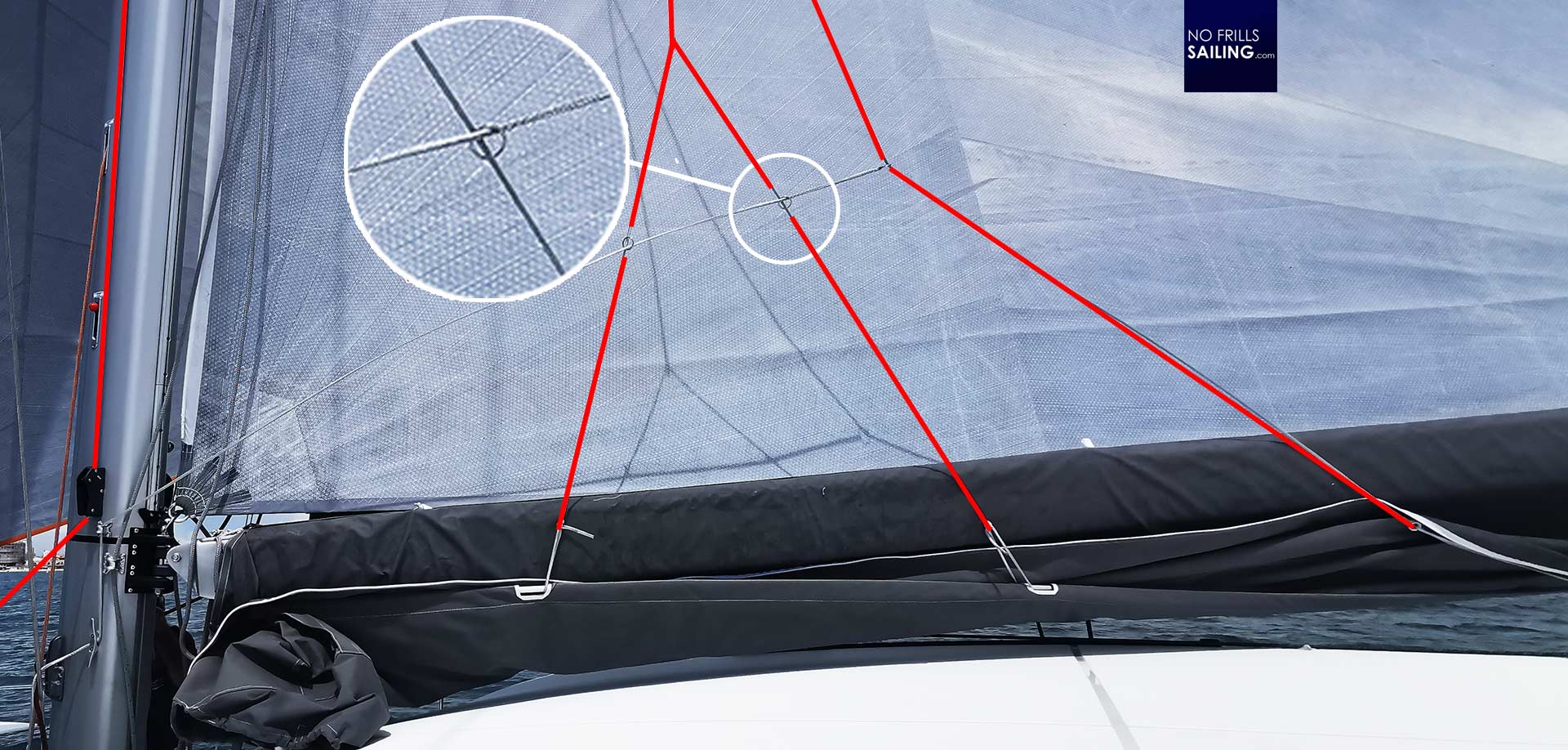
Not much. And it is so easy and simply that you can install this on your boat too. Looking at the picture above, you see the red lines. This is the portside lazy jack. First of all, at the mast, you need a jammer t secure the lazy jack when its up. Coming down from above, the lazy jack splits usually into four fingers attached to the lazy jack, pulling it up and holding it into place. Notice the white circle? There you see steel rings through which the actual reefing line goes. It is secured to the third, outer ring. The reefing line is fed through an eye at the mast.
How it works
Now, here it comes. When the mainsail is up and you know that it will be hours or days of sailing, you might want to reef and put away the lazy back. You proceed to the mast, loosen the lazy jacks and let them down. At the same time, you pull the lazy reefing line. Look at the picture below:
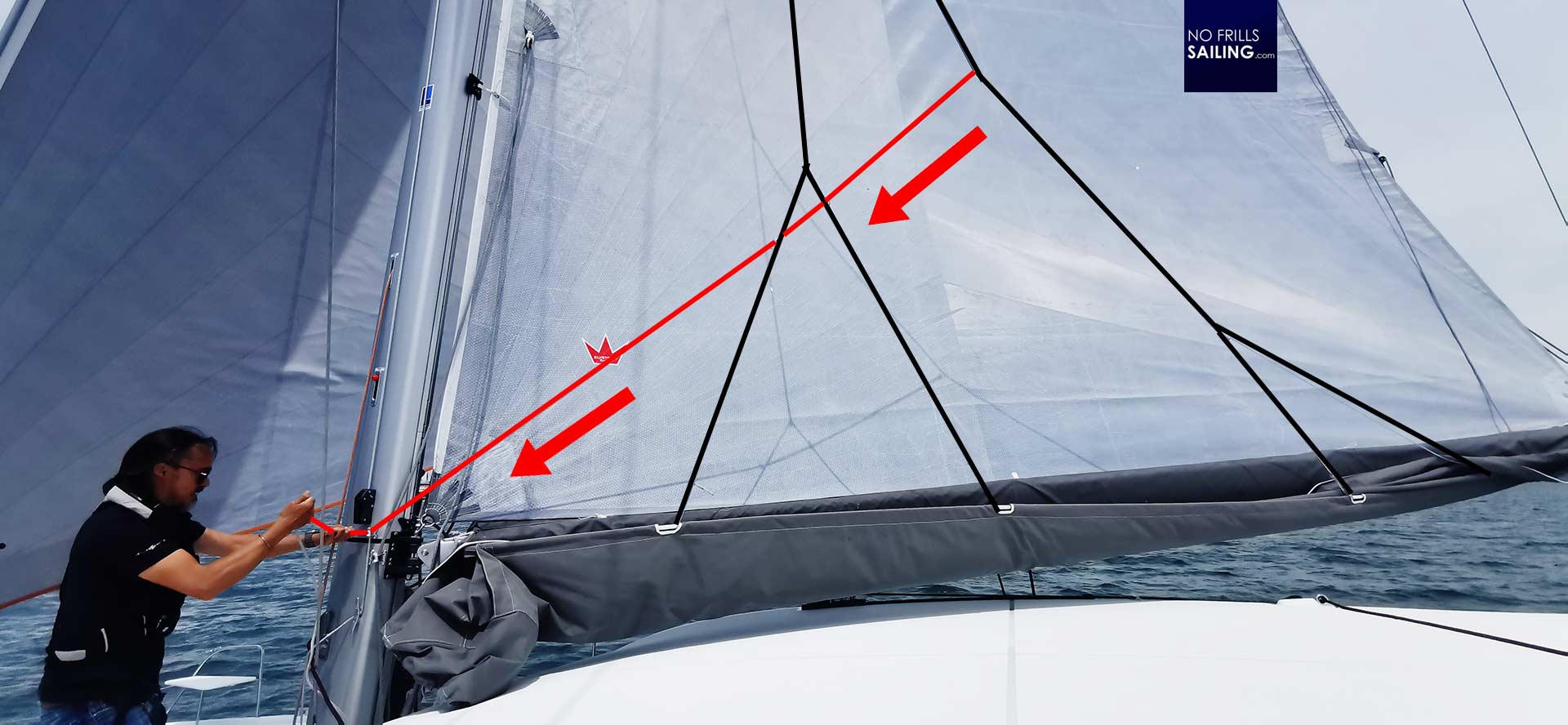
The black lines are the lazy jacks. By loosening them through the open jammer, they will come down. At the same time, pulling at the reefing line (in red in this picture), you take them in and onto the mast. It´s an operation that needs to be done on both sides of the lazy bag of course, but it takes just a mere 15 seconds to take in one side of the lazy bag.
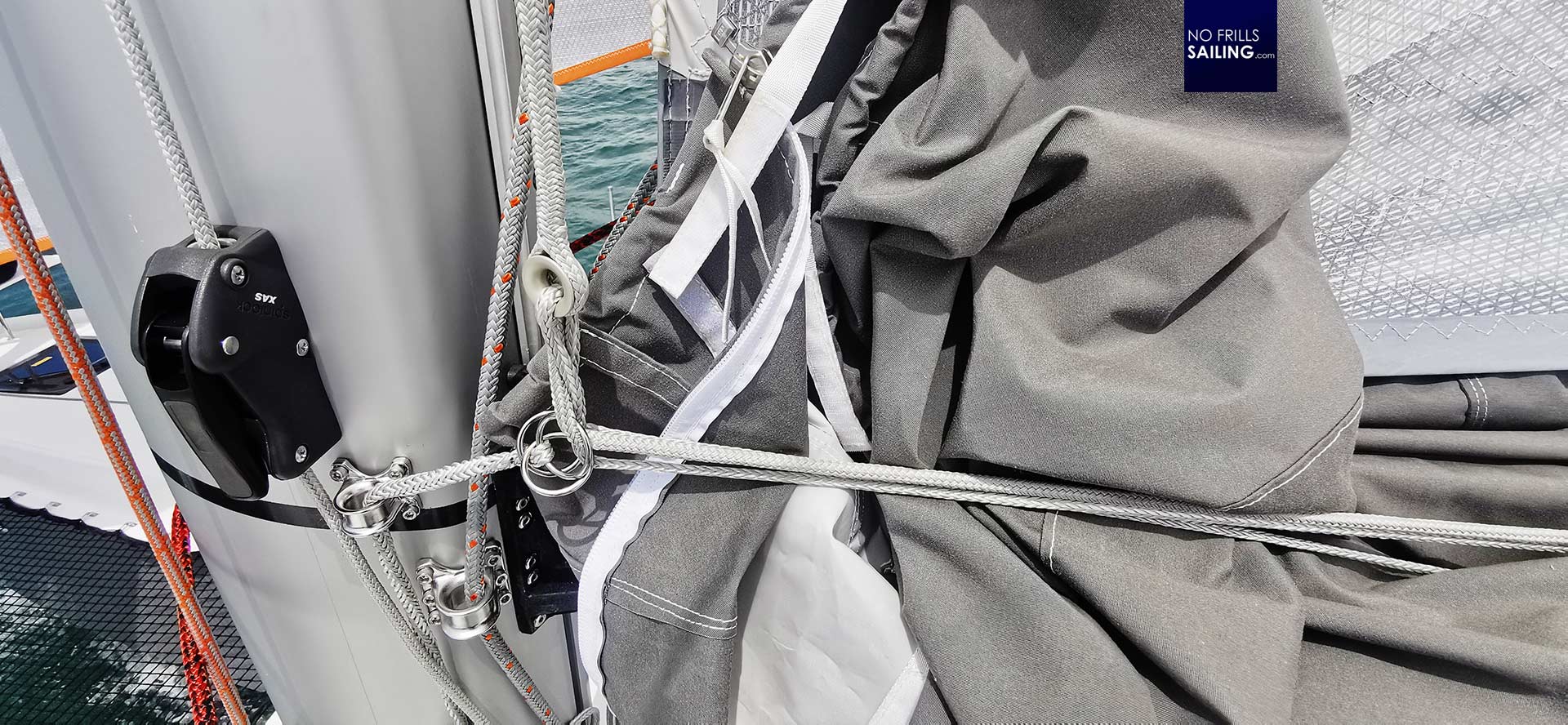
At the boom it looks like this, see picture above: The lazy bag has now been taken down, so the jammer is secured again. Lazy jacks have been fully reefed, so they are bound closely to the mast. Loose ends of all lines are nicely coiled up and put to the mast´s foot. That´s it, almost.
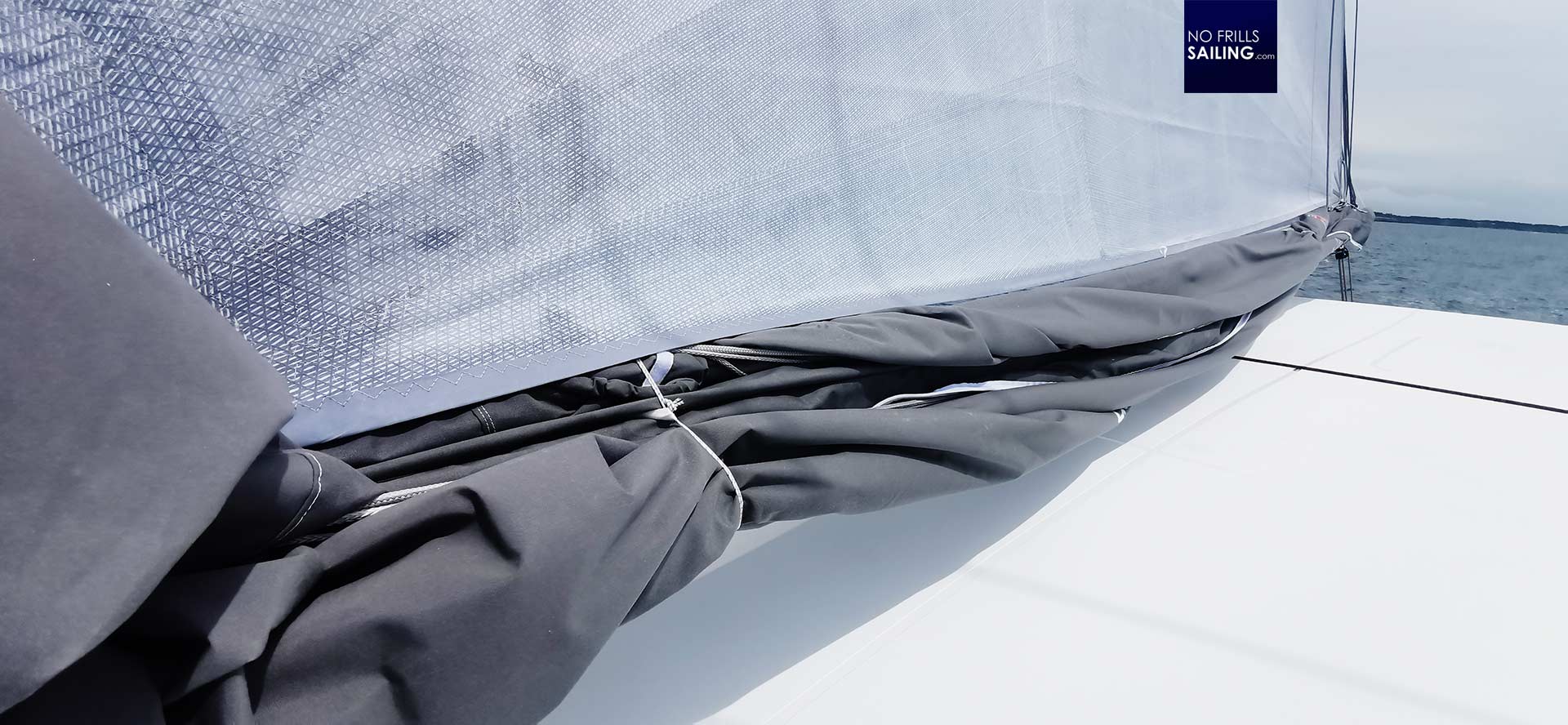
The canvas of the lazy bag now needs to be put together a bit. On board our Excess 14 the supplier of the lazy bag had already put elastic strops with snatchers to the bag which allow to put together the loose canvas and secure it. If you want to retrofit such a system to your boat, simple strops around bag and boom will do just as fine I´m sure. As I said, even on a large yacht like the Excess 14 the whole operation took under a minute. Very easy – and the outcome is just pretty.
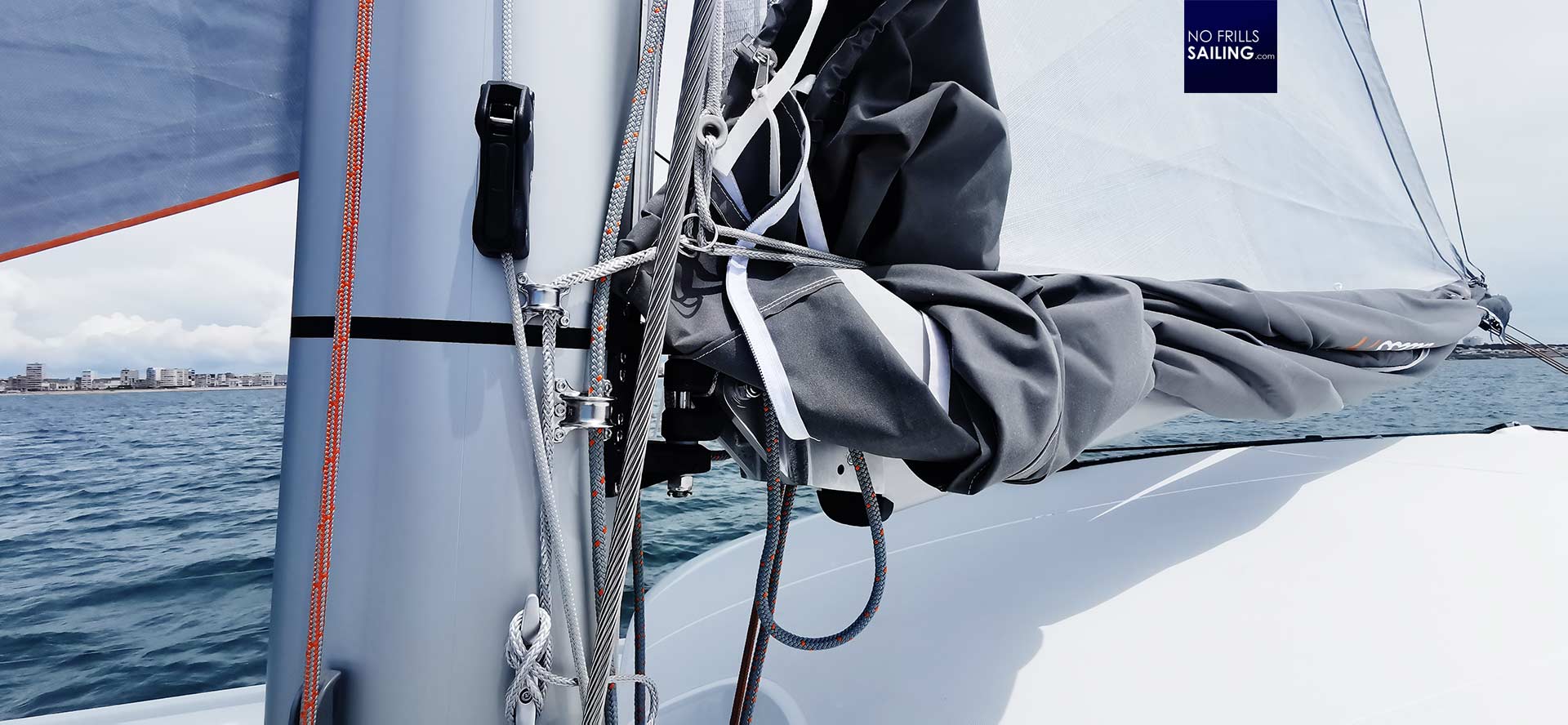
Now the mainsail is free of any obstructions by lazy jack or bag. All canvas is put neatly onto the boom with just two rubber bands, the rest is tethered as nicely to the mast. The mainsail is up and stands in all its glory in the wind, powering our boat. Isn´t that nice to look at?
A clean mainsail – easy operation
Talking to the guys from the shipyard who are skippering the boat, I tell them how excited and amazed I am about this nice little feature. “In fact”, they tell me with a smile: “We didn´t knew at first as well what those rubber strops were all about. Only after asking at the supplier we became aware of this feature.” It´s subtle, but the outcome is worth it, I would say.
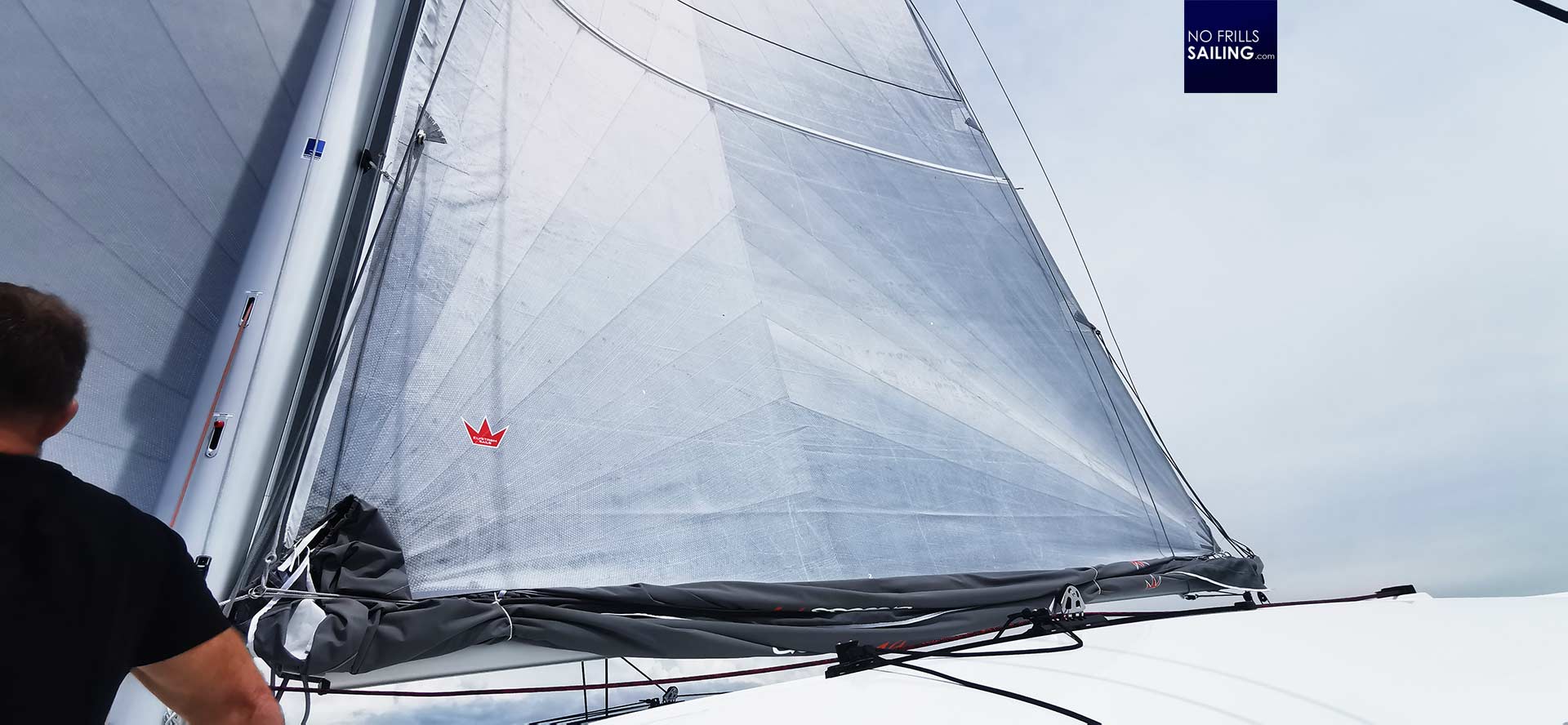
I ask Hervé Piveteau, the “brain” behind Excess, what this would add in terms of airflow and performance. In his opinion it is negligible – but even if this adds just a tenth of a knot to the overall performance, on an Atlantic crossing or even a rans Pacific adventure, this could mean hours advantage in the end. And even if there is no measurable difference – it looks absolutely nice!
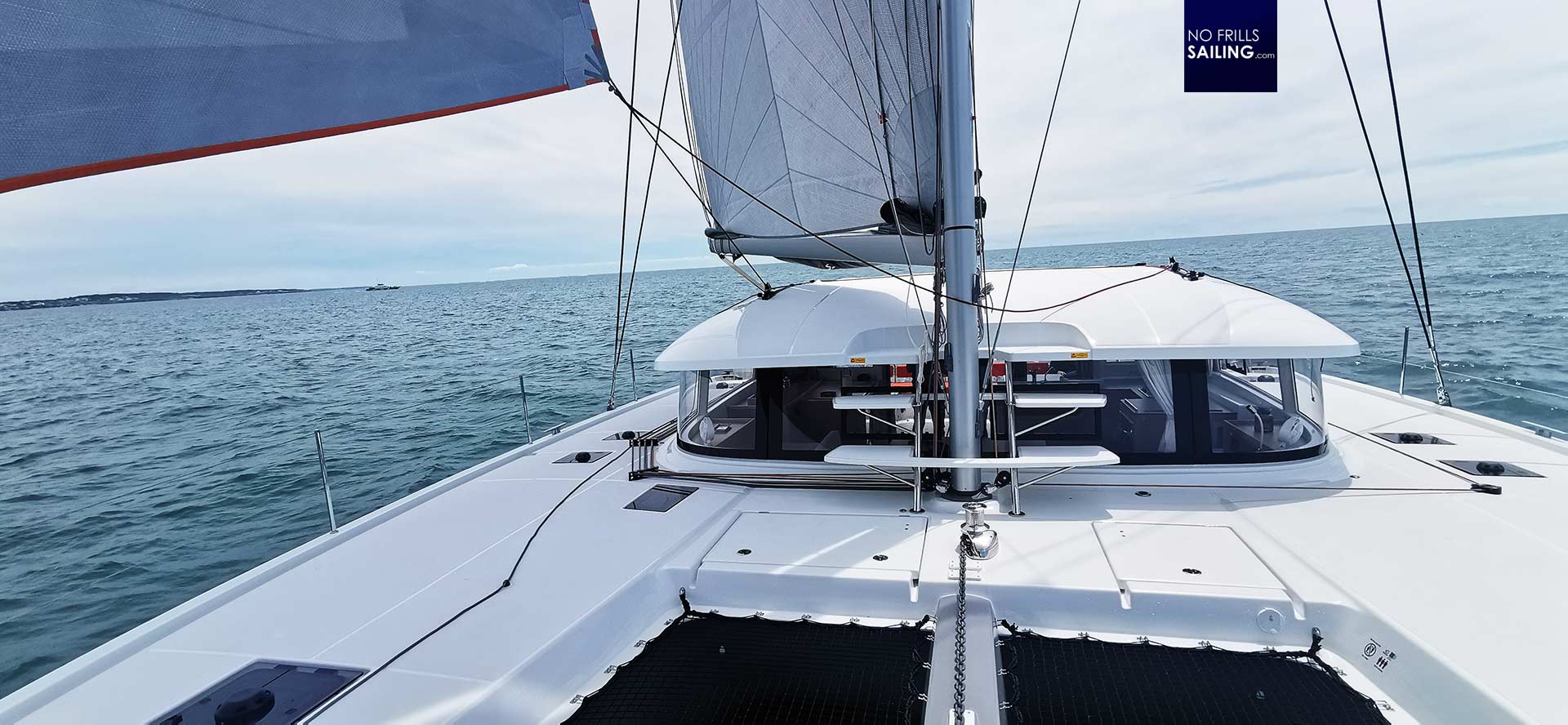
And so, back home, I take the phone and call Sören at Seldén right away. Of course, I need a lazy bag reefing system on my Omega 42 as well! Adding two jammers, one loopeye and two lines with three steel keyrings won´t cost the world, I am sure – but the looks of it will surely contribute to my boat´s – to any boat´s – appearance.
Related articles on deciding details for boats:
Reefing line hustle when setting up your boat first time
Currents in a bucket: About galvanic corrosion
Trailing edge tuning for your rudder blades
